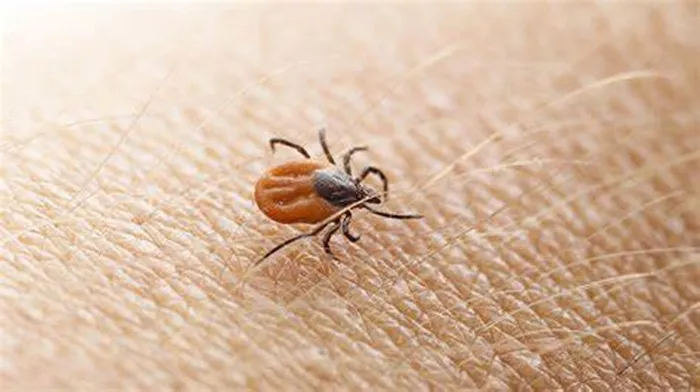In a recent announcement to the Board of Commissioners’ Health and Human Services Committee, Ottawa County Administrative Health Officer Adeline Hambley disclosed the discovery of a lone star tick within Ottawa County. This marks the first confirmed instance of such a tick being found locally.
Hambley noted that the lone star tick, which is increasingly prevalent in northern regions, differs from other ticks by its potential to cause Alpha-Gal syndrome—a condition triggering allergic reactions to red meat in affected individuals.
The tick in question was discovered crawling on a boy and had not bitten or attached itself. The incident likely occurred in the West Olive area near Kirk Park, prompting heightened surveillance efforts in the vicinity, including tick drags and increased monitoring around local parks.
Recognizable by a distinctive white mark on its back and approximately the size of a poppy seed, lone star ticks contrast with Michigan’s more common blacklegged ticks, which exhibit an orange coloration on their backs.
Last summer, a lone star tick was confirmed in Kalamazoo County, underscoring a growing presence in the state. Lucus Pols, Environmental Health Division Chief, emphasized symptoms to watch for post-tick bite, such as fever, sore throat, diarrhea, nausea, and vomiting, urging prompt medical consultation if a tick is found embedded.
Similar to mosquito prevention, reducing tick exposure involves using insect repellent and being mindful of outdoor locations and times conducive to tick activity. Pols advised avoiding warm and humid, brushy, and wooded areas, where ticks thrive and tend to target concealed body areas.
As Ottawa County remains vigilant against this emerging threat, residents are encouraged to stay informed and take precautions when outdoors to mitigate the risk of tick encounters.
[inline_related_posts title=”You Might Be Interested In” title_align=”left” style=”list” number=”6″ align=”none” ids=”10262,10259,10234″ by=”categories” orderby=”rand” order=”DESC” hide_thumb=”no” thumb_right=”no” views=”no” date=”yes” grid_columns=”2″ post_type=”” tax=””]

































